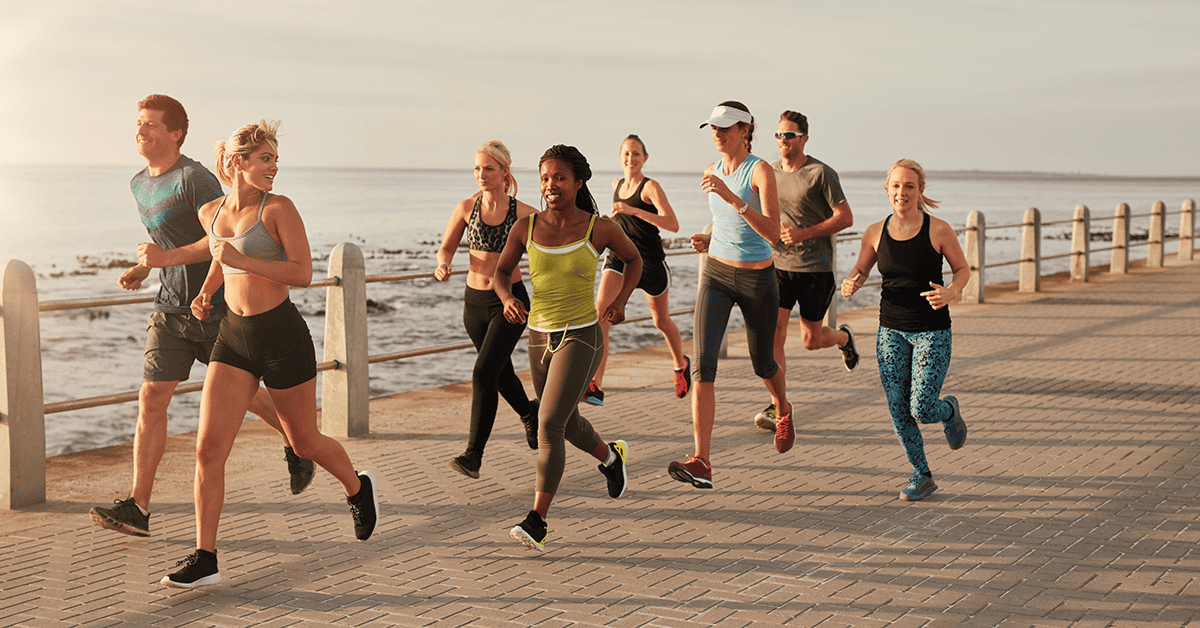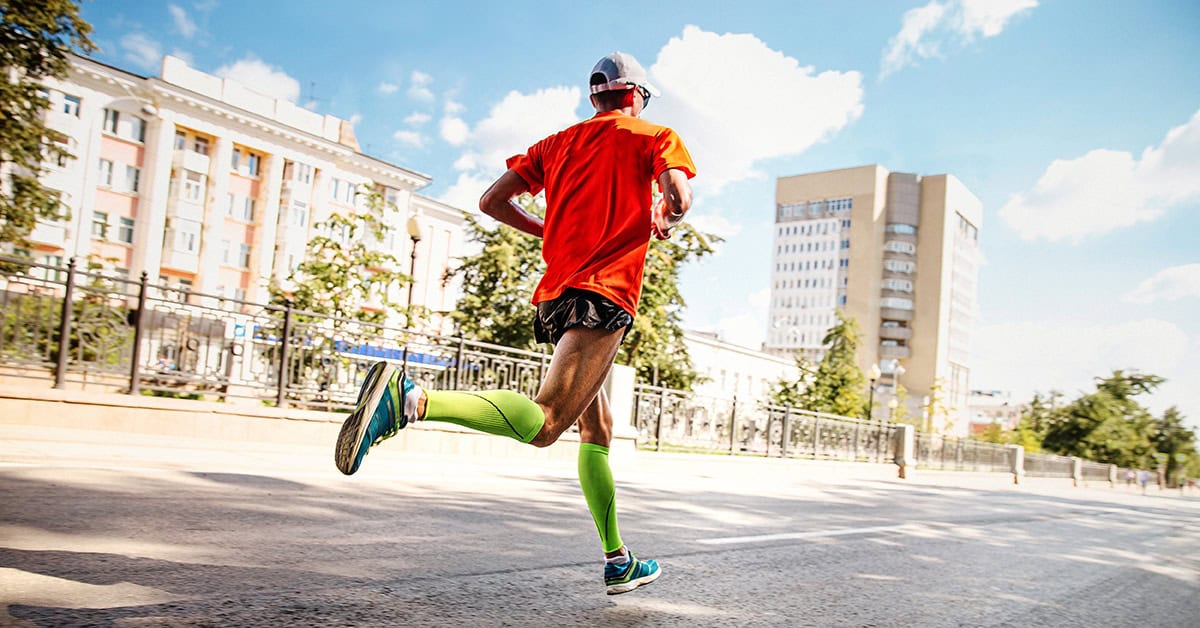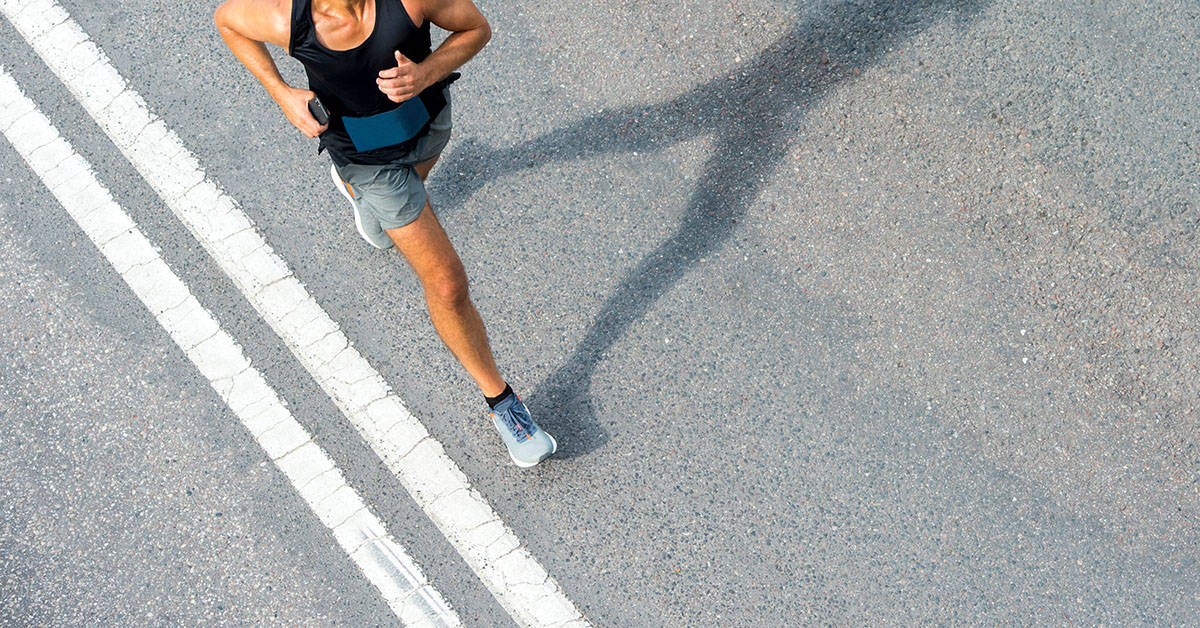5 ways to make running in the rain more enjoyable.
For many runners, it is not a great feeling to open a weather forecast and see a chance of rain. We work hard to follow training programs, optimize food and water intake, and choose the best gear. However, running in the rain in training or on race day remains entirely out of your control.
While it might be tempting to opt for treadmill runs on rainy days, you may want to work in runs in adverse weather as a part of your training plan overall (be sure to avoid outdoor runs if thunderstorms, tornadoes, or flooding are in the forecast in your area).
Aside from the immediate benefit of preparing you for potential race day conditions, running in the rain can be an enjoyable experience, once you embrace the idea that you may get completely soaked. Many runners find it relaxing to listen to the rhythm of rainfall while they run. Others find it empowering to accomplish a run in conditions that most people would avoid.
As you consider adding rainy day runs into your training, several factors could make or break your experience:
1. Choose a suitable outer layer of clothing.
When you decide to run in the rain, it is best to embrace the certainty that you will get wet. Although it is tempting to pile on waterproof outer layers, even the best rain jackets are not entirely impervious to rain at a certain point. Plus, waterproof materials are generally not breathable and may leave you feeling hot and clammy.
Instead, depending on the temperature, choose a form-fitting outer layer made of a wicking synthetic material. Brightly colored jackets or tops are a good choice, as are those with reflective details as rain may reduce the visibility of drivers on the roads.
Remember that running in the rain will feel colder than usual, so choose base layers appropriately (although it is generally unnecessary to wear more layers than usual). For all layers, including your socks, avoid cotton as it is not wicking and gets heavier when wet.
2. Bring a hat for running in the rain.
Rain driving into your eyes is incredibly annoying, so do not forget to wear a hat or visor with a decent-sized bill to shield your face and eye. Wearing a head covering will also help you to retain some extra warmth. If possible, choose a hat made of a synthetic or wicking material and avoid the discomfort of a heavy, wet cotton hat on your head.
3. Do not forget the anti-chafe balm.
Wet clothes and socks can lead to chafing and blisters, so take a proactive approach of applying anti-chafe balm to your feet as well as to any areas where you might be likely to experience chafing (arms, legs, sports bra seam lines, etc.). Remove your wet clothes and put on dry ones immediately after your run to prevent further rubbing.
4. Take extra care of your footwear.
If you have more than one pair of running shoes, you may want to designate a pair for rainy runs. Regardless of whether you have multiple pairs of shoes, leaving running shoes wet can shorten the lifespan of a shoe. Be sure to dry out your running shoes thoroughly after running in the rain.
To dry soggy shoes, remove the interior liner or insole and stuff your shoes with newspaper (which has the added benefit of neutralizing odors). Leave them in a spot with good airflow and remove the paper after a few hours.
If you live in an area prone to storms, you could also consider purchasing waterproof Gore-Tex running shoes and gators to keep more of the rain from seeping in.
5. Protect your electronics.
Do not forget to pack your phone in a sealed plastic bag to avoid water damage (you should assume it will get wet even when in an interior pocket). Also, check to ensure that any other electronic devices such as your running watch are fully waterproof before stepping out the door to run in the rain.
Taking these steps should help to make your rainy day runs a bit more comfortable. Remember that the most challenging part of running in the rain is often getting out of the house in the first place. You may find that you enjoy a rainy run! Even if not, adding runs in the rain to your training plan will help you feel more at ease and mentally prepared for whatever mother nature throws your way on race day.
A Training Plan that Works for You.
Our collection of running plans will help you train year-round. From 5k to a 100-mile ultramarathon, we have a training plan built for your experience level and goals. Every plan is delivered via Final Surge, allowing you to sync workouts across devices, receive daily reminders of workouts and activities, and analyze workout and target zone details. Get started today with a training plan built for you, view our running plans here.










